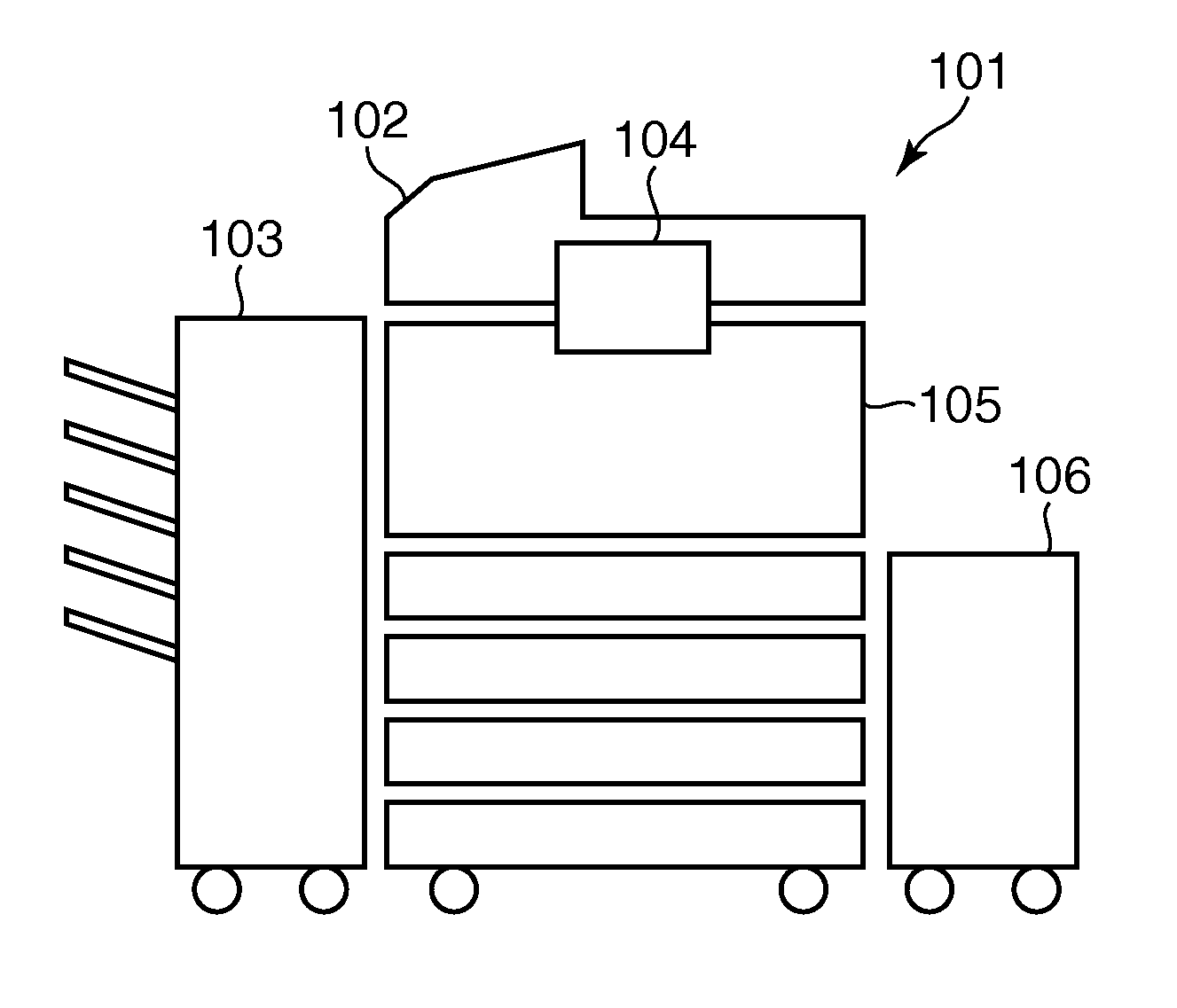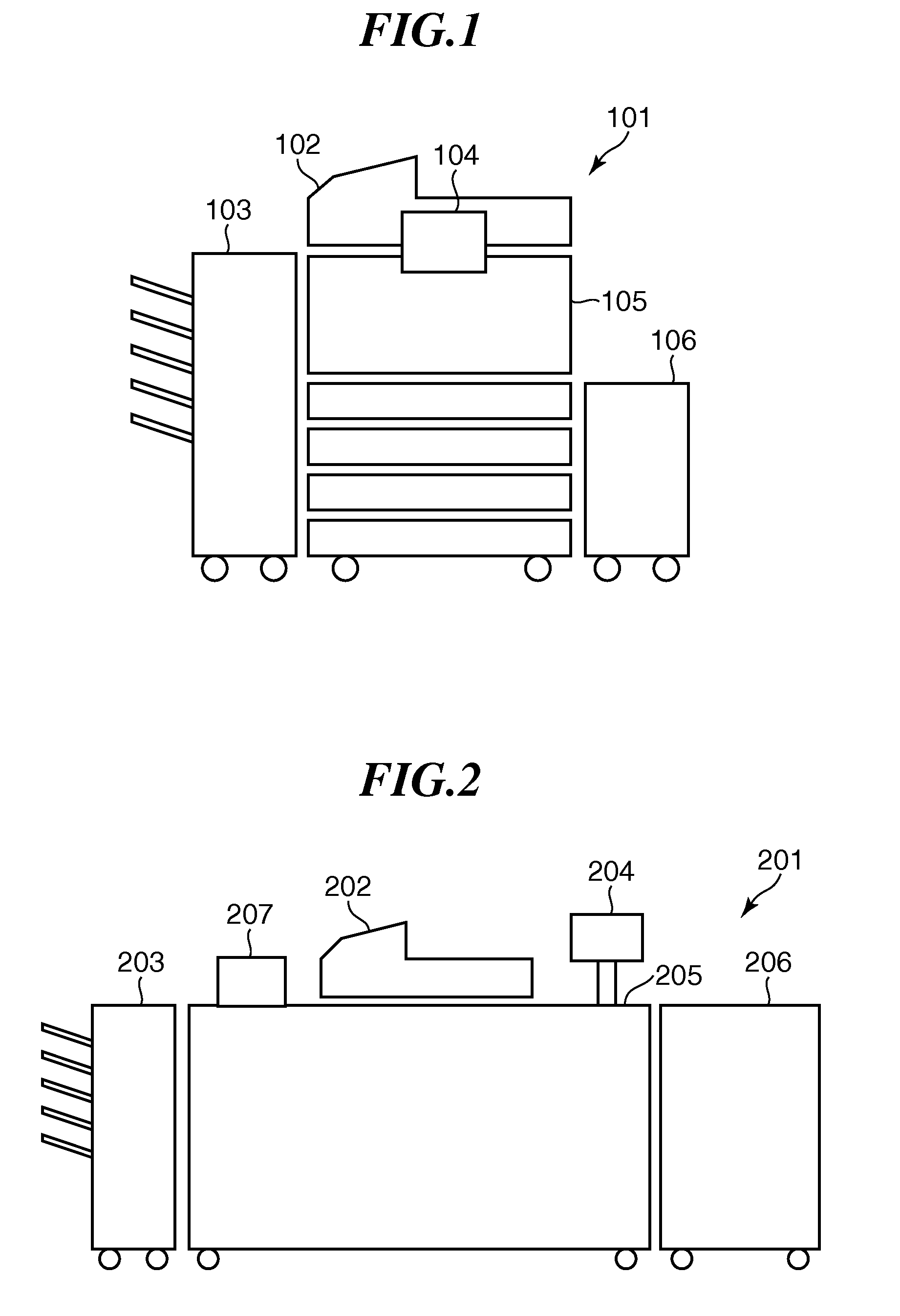Image processing apparatus
- Summary
- Abstract
- Description
- Claims
- Application Information
AI Technical Summary
Benefits of technology
Problems solved by technology
Method used
Image
Examples
Example
[0089]In the first embodiment, an example in which the human body is detected at the operation unit 104 and the paper ejection unit 103 will be described. The reason is to distinguish a user who approaches to operate the operation unit 104 and a user who approaches to pick up the paper ejected to the paper ejection unit 103.
[0090]In the first embodiment, the MFP may be the MFP 101 or may be the large-size MFP 201. The device configuration of the MFP is identical to that described with reference to FIG. 1 through FIG. 4.
[0091]FIG. 12 is a block diagram schematically showing a configuration in which a second human body detection unit 1202 (a second living body detection unit) is connected to the operation unit 104 in FIG. 3.
[0092]The second human body detection unit 1202 and a second antenna 1201 are added to the configuration of the operation unit 104 shown in FIG. 5. The CPU 503 detects the user who approaches to operate the operation unit 104 according to detection results of the h...
Example
[0106]In a second embodiment, an example in which the threshold value Th1 for detecting the human body in the human body detection unit 502 varies in two steps is described.
[0107]In the configuration described in the first embodiment, when a user forms a locus to approach the operation unit 104 after the user goes to the paper ejection unit 103 to pick up paper, the CPU 503 cannot output the return request for returning from the power saving mode quickly to the control unit 303. The second embodiment solves the above-mentioned disadvantage of the first embodiment.
[0108]For example, when a user checks the paper ejection unit 103 and does not find desired output paper, the user approaches the operation unit 104 to check the condition after approaching the paper ejection unit 103. Since the configuration of the device is similar to that of the first embodiment, the description of the configuration of the second embodiment is omitted.
[0109]FIG. 16 is a top view showing the MFP 101 havin...
Example
[0120]In a third embodiment, an example in which a sensor to detect ejected paper to the paper ejection unit 103 is used instead of the second human body detection unit 1202 described in the first embodiment is described. This embodiment uses a fact that a possibility that the user comes to the paper ejection unit 103 becomes low when the paper is not ejected. Since a cost of the paper sensor is cheaper than that of the human body detection unit, the third embodiment has an advantage that achieves lower cost as compared with the second embodiment.
[0121]FIG. 19 is a block diagram showing the configuration in which the paper sensor 1901 is connected to the operation unit 104 in FIG. 3.
[0122]The paper sensor 1901 is used instead of the second human body detection unit 1202 in FIG. 12. The CPU 503 reads a value that the paper sensor 1901 outputs, and determines whether there is paper ejected to the paper ejection unit 103 or not.
[0123]Here, the paper sensor 1901 functions as a condition...
PUM
 Login to View More
Login to View More Abstract
Description
Claims
Application Information
 Login to View More
Login to View More - R&D
- Intellectual Property
- Life Sciences
- Materials
- Tech Scout
- Unparalleled Data Quality
- Higher Quality Content
- 60% Fewer Hallucinations
Browse by: Latest US Patents, China's latest patents, Technical Efficacy Thesaurus, Application Domain, Technology Topic, Popular Technical Reports.
© 2025 PatSnap. All rights reserved.Legal|Privacy policy|Modern Slavery Act Transparency Statement|Sitemap|About US| Contact US: help@patsnap.com



